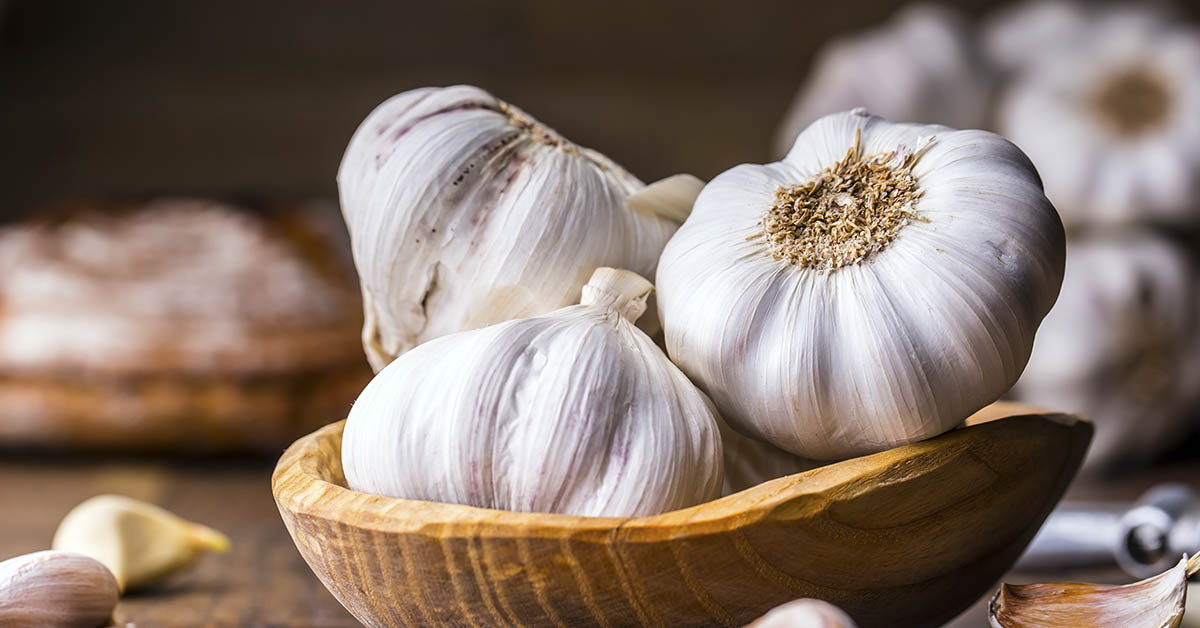For many, food is simply a way to stay alive and energetic. However, for others, food is a passion. A choice to create incredible flavor profiles, and share with the world, one’s own artistic abilities. Food has a way of bringing people together and comforting the soul and one of the most common savory flavors is garlic, a versatile vegetable often used to add flavor to a dish. There are countless facts to learn about the garnish, and even more to love about it.
Garlic’s Category
Garlic is often used as an herb or spice to add a savory, sometimes spicy, element to a dish. However, it’s technically a vegetable, an edible part of a plant, including the bulb or roots. Interestingly, it is also part of the onion family, along with leeks and chives. It has a reputation for being flavorful, nutritious, and low in calories. A perfect trifecta for anyone who loves food, but also wants to remain health conscious.
Garlic’s Servings and Nutrition
Surprisingly, it would take more than one whole garlic bulb to equal a single serving. Each bulb is generally around 20-30 cloves, and a serving size is around 50. The flavorful vegetable has very few calories, carbs, and very little fat. In contrast, it has a healthy dose of potassium, and a small portion of other daily vitamins like magnesium, calcium, and fiber.
It’s important to note that when consumed in too large a quantity or raw, the vegetable may have adverse effects including heartburn and bad breath. Although for some extreme cases the remedy may be to stay away altogether, browning garlic before consumption, or taking antacids, may help to lower the acidity levels enough for your digestive tract.
Garlic for Medicine
For centuries, garlic has not only played an integral role in the flavor profile of many dishes, been proven to be nutritious but has also been discovered to serve a number of medicinal purposes.
- Garlic is high in antioxidants.
- The chemical compounds found in garlic have shown to help reduce both cholesterol and blood pressure.
- Garlic may help to detoxify the body of heavy metals and other free radicals.
- Some studies have shown the flavor enhancing vegetable can also help to improve bone health.
- Research has shown that garlic oil is an anti-inflammatory, meaning it can help alleviate symptoms in conditions, such as arthritis.
- Garlic also has antibacterial properties, which is great news for acne prone skin and immune systems.
Read: Why You Should Be Eating Garlic Daily
Shelf Life and Storage
With so many reasons to love the vegetable, it’s clear that having a few servings around your kitchen can be beneficial for various purposes. So, what is the most effective way to store the versatile vegetable, and for how long can it be stored before it’s considered to have gone off, or gone bad? Garlic has a shelf life that varies depending on the method of storage.
- Homegrown should be dried for about a week in a dark and moisture-free environment.
- Storebought clove/bulb when left unpeeled, the cloves last just under a month. However, if they whole bulb has been left together and unpeeled, garlic can last around six months. Ideally stored around 60-65 degrees. However, the most important aspect is to keep away from heat and allow ample air flow such as storage in a mesh bag.
- Garlic in a can or jar. Pickling and other jarring methods can increase the life span of garlic to longer than six months, in some cases a year or 2. This can include storing in preservatives like oil, wine, and vinegar.
- Powdered. When powdered, it may get clumpy and lose potency. However, doesn’t go bad for a very long time, in some cases a year or two. Most culinary masters know a good way to compensate for the loss of flavor is to use more of the seasoning.
- Freshly minced or chopped. Peeled and chopped garlic should always be put into the fridge as soon as possible and lasts no longer than a day.
When to Avoid it
Luckily, it’s not hard to tell when it’s gone bad. Obvious signs include a browned husk, shriveled cloves, or green sprouts growing from the top. The cloves may also be mushy, soft, or brown. Note that “new season garlic” differs from regular garlic.
Alternatively, healthy and safe garlic should be stiff, white or ivory, and have white or purplish husks. Fortunately, serious illness from eating the vegetable spoiled, is rare but can result in botulism. Interestingly, sprouted garlic is still safe to eat, although will have a differing flavor and should not be used raw.
Tasty Garlic Ideas and (Savory) Treats
Roasted Garlic on its own is incredibly flavorful and versatile. It can be spread on bread or mixed with butter and spread on bread or used to add a layer of flavor and aesthetics to salads. Garlic can also be paired with other tasty veggies, cheeses, and meats for a delicious appetizer platter and added to various vegetable dishes, such as roasted garlic cauliflower mash and other healthy dishes.
Keep Reading: How To Make Amazing Naturally Flavored Water
Sources
- “6 garlic benefits to boost your health.” Cleveland Clinic. March 2, 2022.
- “11 proven health benefits of garlic.” Healthline. Joe Leech, MS. May 5, 2022.
- “How to store fresh garlic: 12 steps (with pictures).” Wiki How. September 29, 2022.
- “How long does garlic last?” Food Network. Food Network itchen. January 26, 2023

